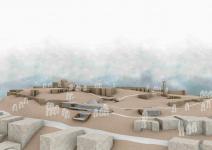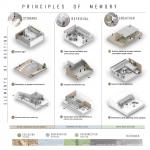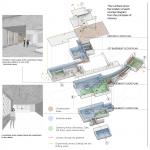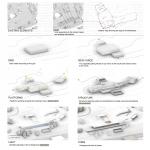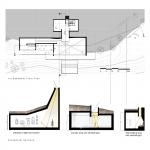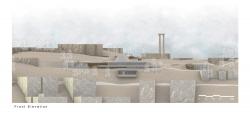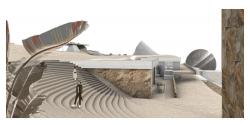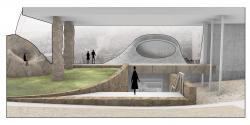We are living in a dilemma of a moving world that strives for productivity, and the inner self that needs stopping points for reflection. With the hustle of city life, we ignore the need for intrinsic connections exceeding our mere physicality, but can we stop time for a moment of serenity? What about right in the heart of the city?
The citadel, in the heart of Amman, lacks the day-to-day experience of the people living around it whose buildings create informal points of interaction between the tourists and the residents. Moving up there, all the way from the crowded streets of downtown, one can smell the freshness of figs and jasmine flowers, feel textured walls, hear voices of birds and kids, and be offered desserts from the aunts in the neighborhood, while enjoying the views of the city, and finally, contemplating the contrast between the old civilizations and the present-day city at the peak. This transition from the haste of the city to the serenity of the peak, with memories captured in the process of ascending, can be hardly felt coming from the conventional entrance. However, the biggest challenges are the gap between the historic and residential areas and the undefined entry point.
While comparing the physical layer of traces, and the social layer of human presence, one can notice a gap that can add up to the journey through Amman's historicity when bridged. The old fortification layout, which separates the two areas, is the intermediate point where the project is located, to connect the past traces of historic importance with the buildings of social and communal significance. Communal and historic qualities are also manifested in gathering and exhibition spaces, with contemplation areas, as experienced in different parts of the site.
The concept of memory was dealt with from three angles, the first is memory storage, represented in seclusion diagrams, and it can be achieved through spaces of contemplation with zenithal light openings, and a slow-paced experience since it can help in storing events in memory. The second is memory retrieval, as showcased in observation diagrams, and is manifested in outdoor and indoor viewpoints that clear the mind and facilitate the retrieval of memory. The final element is memory creation, represented in reconnection diagrams, focusing on reconnecting people, nature, and past traces to create memories.
The areas of memory storage (present) are abstract in their materiality, with concrete and light since their ephemeral qualities are suitable for spaces of contemplation and passing by. On the other hand, the areas of memory retrieval (past), and creation (future), are represented by earth, plants, water, and stone, which are permanent materials symbolizing the rootedness of nature, and future possibilities. This dichotomy of natural complexities and minimalistic abstractness stems from the dual nature of the self, manifested in the very essence of a human dilemma in an outer world bound by the rules of the Earth (body), simultaneous with an inner world that negates it (mind).
With cultural amnesia and fast, monotonous, and incoherent urban developments, preserving memory is becoming widely important. The project, as a continuation of the historic site, serves as a transitional zone from the crowded city towards a serene site with a spiritual aura of the past, while exhibiting the concept of memory, through episodes of reminiscence, created by human traces and spatial experiences.
2022
Project Title: Reminiscence.
Project Site Location (City, Country): Amman, Jordan.
Project coordinates on google maps: (31.9533562, 35.9341154).
Project Function: Community Exhibition.
Project Area: 1625 m^2.
Designer: Majd Abu-Ajamieh
Supervisor: Saleem Dahabreh

